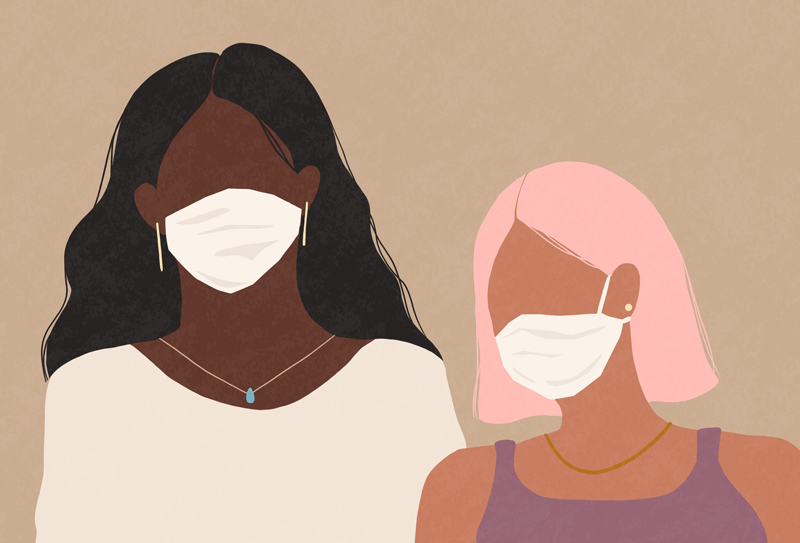


Vulnerable communities
Illustration by iStock July 21, 2020
UD researchers look at social vulnerability factors and COVID-19 infection rates in the U.S.
Racial minorities and people with limited English are nearly seven times more likely to be infected with coronavirus (COVID-19) in the United States, according to University of Delaware epidemiology researchers who looked at infection case counts in U.S. counties.
Dr. Ibraheem Karaye, a postdoctoral researcher, and Jennifer Horney, founding director of the epidemiology program in the UD College of Health Sciences, compared 15 factors of social vulnerability with COVID-19 infection counts from the start of the pandemic in the U.S. until May 12. Overall, people from counties with high social vulnerability factors were nearly twice as likely to develop COVID-19 infections, according to the data.
Although minority status and language issues were associated with increased number of COVID-19 cases nationally, other social vulnerability factors — including household composition, access to transportation, housing and disability status — predicted infection rates on a local level. Their findings were published in the American Journal of Preventive Medicine.
Karaye said the findings could identify counties in the U.S. where additional resources or public health interventions to address social vulnerabilities may be needed to reduce COVID-19 infection rates.
“These are places where the CDC might want to send public health resources to respond. Maybe these are places that have the potential to be hotspots,” Horney said.
Social vulnerability refers to factors including poverty, lack of access to transportation and housing that can affect a community’s ability to respond and withstand a disaster. The 15 variables, compiled by the U.S. Centers for Disease Control and Prevention, include four themes: socioeconomic status; household composition and disability status; minority status; and housing and transportation access. The index is intended to estimate the relative vulnerability of areas and identify populations that are more likely to need support in the event of a disaster.
The study looked at infection counts in 2,444 U.S. counties and researchers found geographic variations. Delaware was among seven states and Washington, D.C., with the highest case counts per 100,000 people, through May 12. In those states – which included New York and New Jersey – minorities and people with limited English were more than nine times as likely to be infected, according to the research findings.
In Washington and Oregon, minority status and language level, along with household composition and disability, were more predictive of COVID-19 case counts than housing and transportation. In the Gulf Coast states, vulnerability to COVID-19 was better explained by housing and transportation challenges than minority status and language issues.
“This study showed the differences between the states in social vulnerability factors and COVID-19 counts,” Karaye said.
Karaye said more research is needed to look at some of the reasons why these associations exist. In the U.S., 44 million Americans are underinsured. Many workers don’t have paid sick leave. Undocumented migrants may be fearful of medical screenings for fear of deportation. Crowded neighborhoods and a need to work multiple jobs often make it hard for people to practice the physical distancing recommended to reduce the risk of infection. These issues, along with others, may increase the risk of contracting or transmitting COVID-19.
The authors noted that additional resources could help mitigate the disproportionate burden on communities vulnerable to COVID-19, including expansion of unemployment benefits, paid time off and family leave, access to healthcare facilities without question of immigration status; and improving sanitation and access to testing to nursing home residents, prison populations and the homeless.
Contact Us
Have a UDaily story idea?
Contact us at ocm@udel.edu
Members of the press
Contact us at mediarelations@udel.edu or visit the Media Relations website

